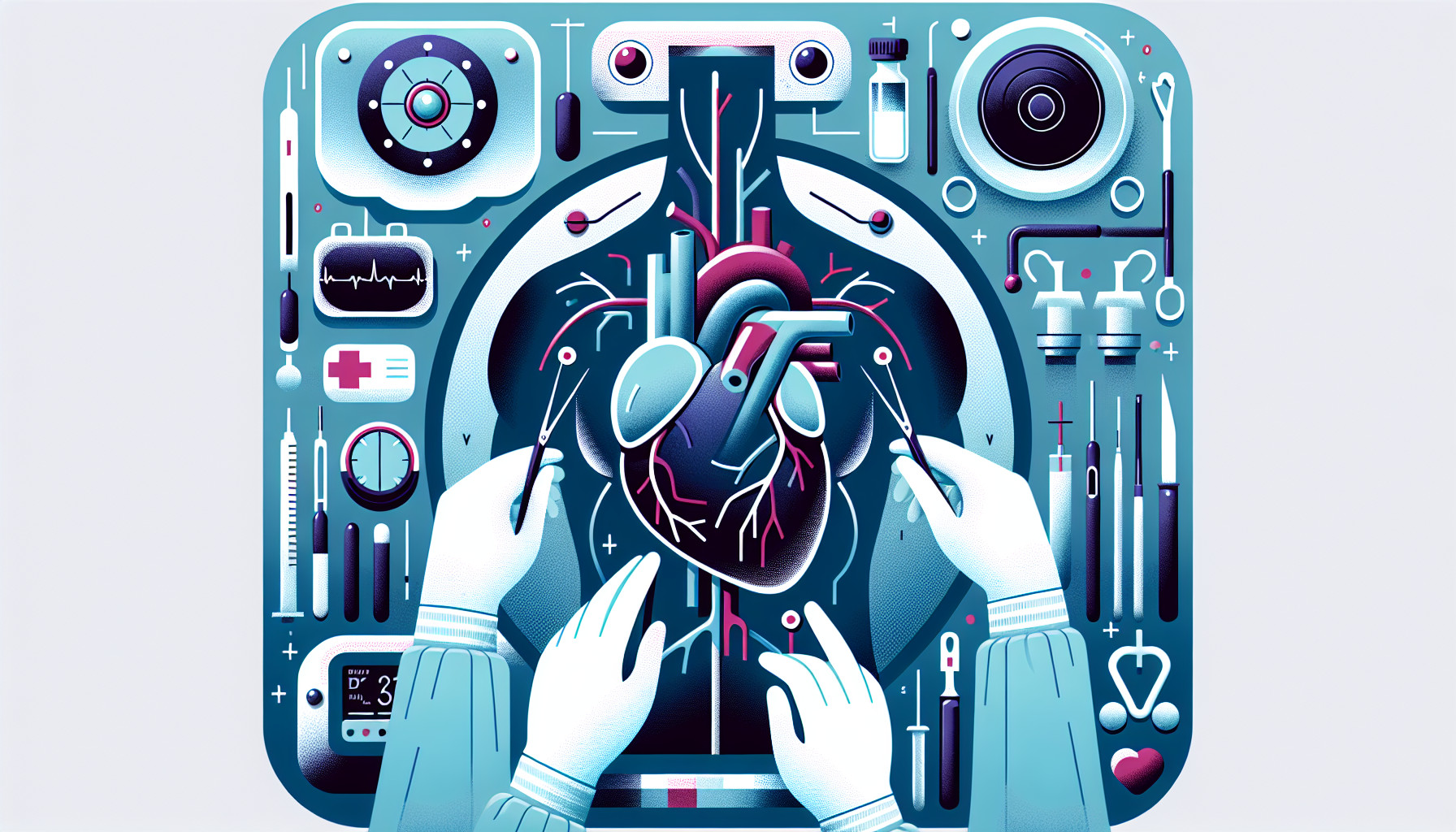Our Summary
This research paper does not have an abstract, but based on the keywords, the study likely focuses on the use of a certain type of Magnetic Resonance Imaging (MRI) known as Late Gadolinium Enhancement (LGE) in assessing heart muscle viability or health, especially after a Coronary Artery Bypass Graft (CABG) surgery. CABG is a surgical procedure that improves blood flow to the heart.
The paper probably discusses how this imaging technique can be used for risk stratification, which is a process of categorizing patients based on their risk of developing a certain condition or outcome. This could help doctors make better treatment decisions and improve patient outcomes.
FAQs
- What is Coronary Artery Bypass Graft Surgery?
- How is Magnetic Resonance Imaging used in relation to Coronary Artery Bypass?
- What is Myocardial Viability and its role in risk stratification for coronary artery bypass?
Doctor’s Tip
One helpful tip a doctor might tell a patient about coronary artery bypass surgery is to follow a healthy lifestyle after the procedure. This includes maintaining a balanced diet, engaging in regular exercise, quitting smoking, and managing stress levels. These lifestyle changes can help improve the long-term success of the surgery and reduce the risk of future heart problems.
Suitable For
Patients with significant blockages in the coronary arteries, leading to reduced blood flow to the heart muscle, are typically recommended for coronary artery bypass surgery. This procedure is often recommended for patients with severe coronary artery disease who have not responded well to other treatments such as medication or angioplasty. Patients with multiple blockages, left main coronary artery disease, or those at high risk for a heart attack or other serious complications are also candidates for coronary artery bypass surgery. Additionally, patients with reduced heart function or those who have already had a heart attack may benefit from this procedure. Ultimately, the decision to recommend coronary artery bypass surgery is individualized based on the patient’s specific condition and risk factors.
Timeline
Before coronary artery bypass surgery:
Patient undergoes various tests and evaluations to determine the extent of coronary artery disease and the need for surgery, including ECG, stress tests, and coronary angiography.
Patient may be prescribed medications to manage symptoms and reduce the risk of complications.
Patient meets with their healthcare team to discuss the procedure, risks, benefits, and post-operative care.
Patient may need to make lifestyle changes, such as quitting smoking or improving diet and exercise habits, to improve outcomes.
After coronary artery bypass surgery:
Patient is monitored closely in the intensive care unit immediately after surgery to ensure stable vital signs and recovery from anesthesia.
Patient gradually transitions to a regular hospital room as they recover, with close monitoring of heart function, breathing, and pain management.
Patient begins physical therapy and rehabilitation to regain strength and mobility, as well as education on managing medications and lifestyle changes.
Patient follows up with their healthcare team regularly to monitor progress, address any complications, and make any necessary adjustments to their treatment plan.
Patient may need to make long-term lifestyle changes, such as following a heart-healthy diet, engaging in regular exercise, and taking medications as prescribed, to prevent future heart problems.
What to Ask Your Doctor
- What is coronary artery bypass surgery and why do I need it?
- What are the risks associated with the surgery?
- How long will the recovery process take?
- What lifestyle changes will I need to make after the surgery?
- Will I need to take medication after the surgery? If so, what type and for how long?
- What are the potential complications of the surgery?
- How long will the benefits of the surgery last?
- What are the alternatives to coronary artery bypass surgery?
- How often will I need follow-up appointments after the surgery?
- Are there any restrictions on physical activity or diet after the surgery?
Reference
Authors: Nucifora G, Selvanayagam JB. Journal: Heart Lung Circ. 2016 Jun;25(6):535-7. doi: 10.1016/j.hlc.2016.04.003. PMID: 27134070
